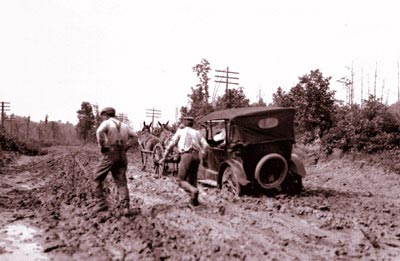
Then: "Horseless Carriage" being pulled along, 1917, Federal Highway Administration
Although not without consequence, the Interstate Highway System transformed the old dirt roads of the past and became a major turning point in shaping America's economy, society, and way of life.

Then: "Horseless Carriage" being pulled along, 1917, Federal Highway Administration
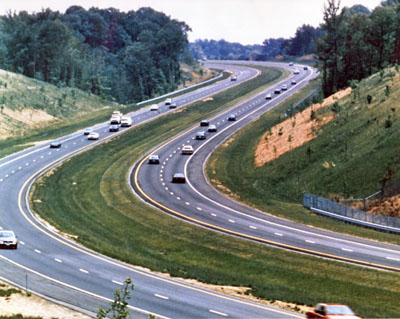
Now: Segment of I-97, Maryland, 1990, Federal Highway Administration
The Interstate Highway System has provided Americans with a safe, consistent, and efficient form of transportation. Today, even with its fast speeds and high usage, the Interstate Highway System has a fatality rate almost half that compared to all roads.

Graph of the fatality rates of roads in America, 2000, Federal Highway Administration

U.S. Interstate Highway System Lane mileage and vehicle travel, 2019, National Transportation Research Group
By connecting people and places across the country, the Interstate Highway System has allowed businesses to scale their operations more quickly and economically, ultimately becoming a major turning point in America's economy and international competitiveness. It is estimated that for every $1 spent on the highways, $6 has been returned to the economy.
The Road to Prosperity, 1961, Federal Highway Administration
"The Interstate System has been the backbone of our economy for 50 years. It provides a vital connection between people, goods, and services and helps link U.S. markets with those around the world."
~ J. Richard Capka, 16th Federal Highway Administrator
Interstate Highways made transportation in and out of cities faster and easier, supporting suburban growth across America. Suburban growth, combined with traffic being funneled through highway interchanges, created opportunities for businesses like fast food chains, hotels, and malls to thrive.
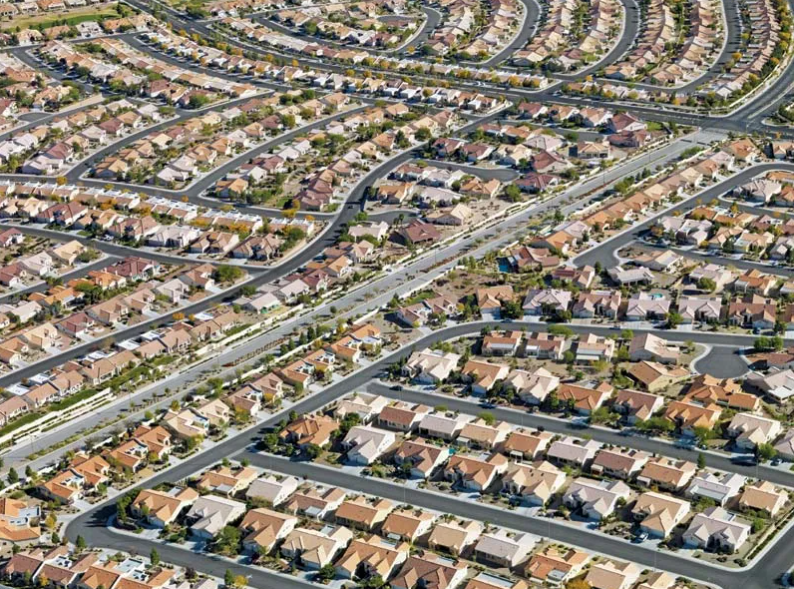
Suburban Growth around Interstates, Las Vegas, Nevada, 2007, Britannica
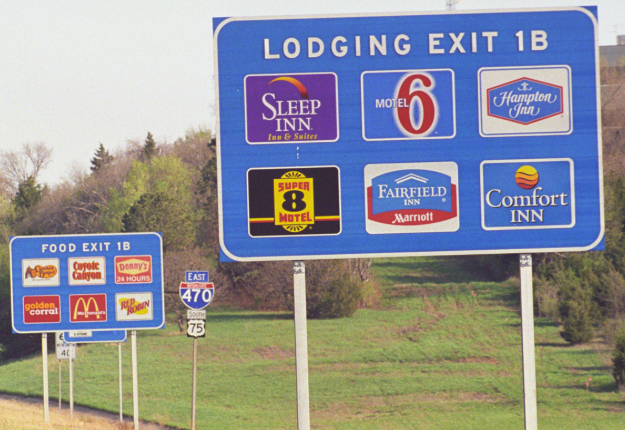
Interstate Logo Signs, 2010, Kansas Department of Transportation
By granting Americans the individual freedom to live, travel, and work anywhere in the country, the Interstate Highway System has led to national population shifts towards close proximity of Interstate Highways since the 1950s.
"There has been a pronounced "sunbelt shift" to population, with over 90% of national growth in the eighties going to the South and the West, at the expense of the older, more settled regions of the Midwest and Northeast. The South and West now have more than 56% of the nation's population."
~ Alan Pisarski, Transportation consultant and demographics expert
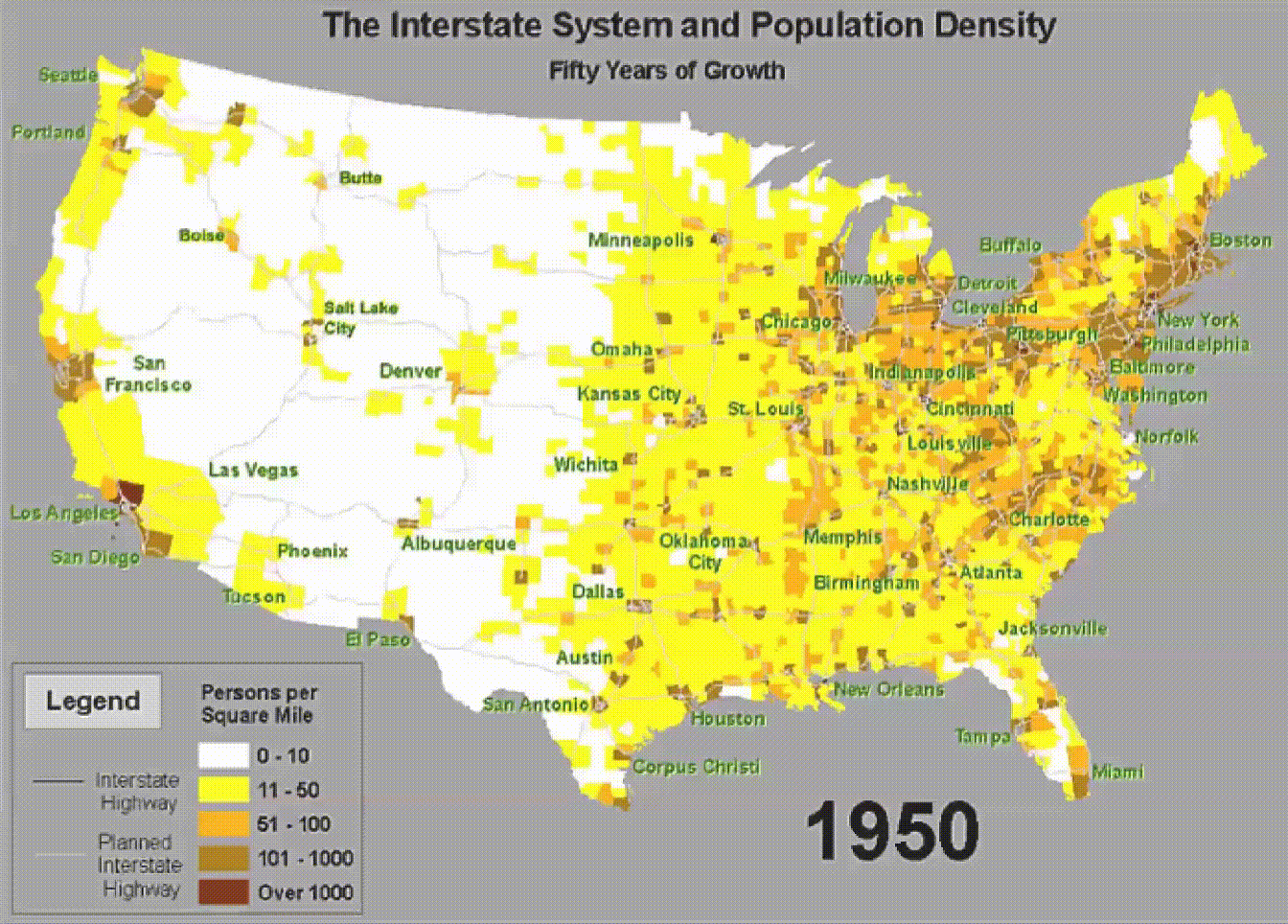
Interstate Density Map, 2000, Federal Highway Administration
From dirt roads to a vast system of interconnected freeways, the Interstate Highway System has been a major turning point that has disproportionately devastated poor and minority communities while transforming travel, economic growth, where people live, and everyday life in America.

Richard Weingroff, 2018, Federal Highway Administration
Personal Interview with Richard Weingroff
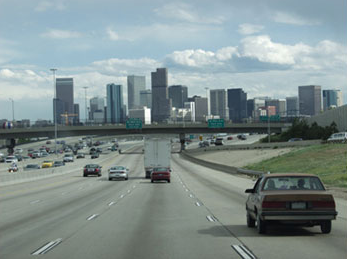
Interstate 25, Denver, 2000, Federal Highway Administration